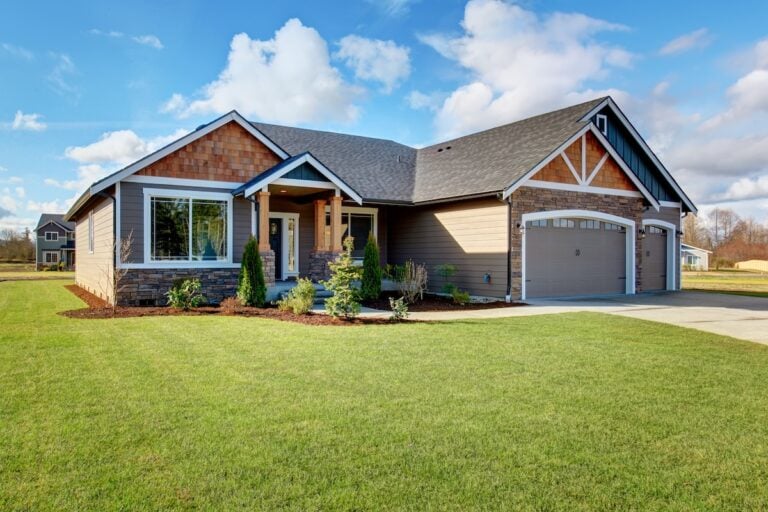
6 Min Read

As a homeowner, you know how important it is to maintain the health of your roof. However, despite our best efforts, sometimes roofs endure damage. Here are a few different ways that roof shingles can incur harm:
When such damage occurs, it may not be necessary to completely replace your roof. Here’s how to skillfully replace only the damaged shingles without compromising the integrity of the surrounding area.
Before you begin, closely inspect the roof to determine the extent of the damage. Identify all the damaged roof shingles you need to replace.
Keep in mind that a damaged shingle may not be completely detached from the roof. It could just have a crack or tear, which can also cause leaks and further damage if left unattended.
Once you’ve identified the damaged shingles, gather all necessary tools and equipment. These include:
As with most roofing projects, it can be helpful to have a friend or two around to support and assist as needed.
Carefully slide the pry bar under the damaged shingle to loosen the nails. Using the pry bar, remove any remaining nails from the damaged shingle. Lift and remove the damaged shingle. Be gentle to avoid damaging adjacent shingles. If the nails don’t come out with the shingle, remove them with the pry bar or hammer them flat.
Once the damaged shingle is removed, clear any debris from the area. Check for underlying damage to the roof. If there’s damage to the roofing felt below, that will need to be patched or replaced before proceeding.
To patch the roofing felt, cut a piece of felt slightly larger than the damaged area and use roofing adhesive to secure it in place. Allow the adhesive to dry completely before moving on to the next step. If the roofing felt needs to be replaced completely, carefully remove the damaged section and replace it with a new piece, securing it in place with roofing nails.
Place the new shingle in position, overlapping the adjacent shingles. Make sure it’s aligned properly with the surrounding shingles. It should fit snugly, but if it’s a tight fit, gently bending the shingle can help it slide into position without damaging the surrounding ones. Secure it with roofing nails, being careful not to hammer too hard and damage the new shingle or surrounding ones.
If you’re using a nail gun, adjust the pressure accordingly to avoid over-penetrating the shingles. Once the new shingle is secure, use roofing adhesive to seal any gaps between the shingles.

Once in place, nail the new shingle down at the top where the nails will be covered by the shingle above. This will prevent water from entering the roof through exposed nails. Follow the specific nailing pattern recommended for your shingles, generally four nails per standard shingle.
Make sure the shingle is securely fastened before moving on to the next step.
Apply a small amount of roofing adhesive under the edges of the shingles surrounding the new one. This will help to prevent any potential leaks and secure the shingles in place. It also ensures a tight seal and prevents wind uplift from affecting the new shingles.
Give your repair work a final inspection to ensure everything is properly sealed and secured. Look out for any nails that may have come loose during the repair process and hammer them down if found.
Keep these factors in mind when deciding whether to replace your entire roof:
While DIY repairs can be satisfying, working with a roofing professional ensures that repairs are performed correctly and efficiently. Professionals bring expertise in identifying hidden damage and can often guarantee their work, providing peace of mind that your roof remains in good condition.
Always prioritize safety when performing roof repairs. No repair job is worth putting your personal health and safety at risk.
Use a sturdy ladder, and consider wearing a safety harness. If you’re unsure about your ability to safely complete the job, contact a professional.
Replacing damaged roof shingles is a feasible task for many homeowners and DIY enthusiasts. By following the steps outlined above, you can ensure your home remains protected without the need to invest in a new roof prematurely. However, consider the extent of the damage and your own capabilities before taking on roof repairs.
Remember, a well-maintained roof is crucial for safeguarding your home against the elements. By addressing issues with damaged roof shingles promptly, you can prevent further damage and extend the lifespan of your existing roof.
For those times when a professional roofer is necessary or preferred, trust Kingfisher Roofing with all your shingle repair and replacement needs. Our team has the skills and experience to ensure your roof maintains its structural integrity and continues to protect your home effectively.
Reach out today to get started!